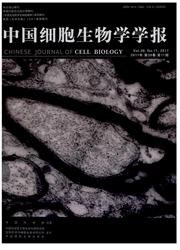

 中文摘要:
中文摘要:
斑马鱼中囊胚过渡是由母型基因调控转向合子型基因调控的重要发育阶段,也是背腹轴特化的重要时间节点。受精卵中的母型因子决定了胚胎背腹轴区域的早期划分,并作为上游因子活化合子型背腹轴决定基因。中囊胚过渡后伴随着母型因子的降解和合子型基因的表达,参与背腹轴特化的信号分子也发生了有序更迭。此外,Wnt/β-catenin及Wnt/IP3-Ca^2+信号通路都参与了背腹轴特化,其中Wnt/β-catenin信号通路中的组分在中囊胚过渡前后均有存在,但在中囊胚过渡前或中囊胚过渡后将其过表达造成的背腹方化效应却绝然相反,更提升了中囊胚过渡在背腹轴特化进程中的特殊性。本文将围绕近年有关斑马鱼中囊胚过渡前后的母型及合子型调控因子、信号转导机制及生物学功能等研究进展作一综述。
 英文摘要:
英文摘要:
Zebrafish mid-blastula transition(MBT) is an important development stage during which the embryo proceeds from the maternal transcripts control to zygotic's, either a significant time point for dorsal-ventral axis specification. The DV region of embryo has been determined by maternal factors deposited in oocyte immediately after fertilization, sequentially these maternal factors activate downstream zygotic DV genes. Factors involved in DV specification take turns together with maternal degradation and zygotic activation. Additionally, Wnt/β-catenin and Wnt/IP3-Ca^2+ signal pathway both take part in the DV specification process. Wnt/β-catenin pathway exists pre- and post- MBT, but its effects to DV specification differ dependent of the stage when it's overexpressed, Which rasies the particular role of MBT in DV specification. We reviewed recent year study about the maternal and zygotic factors involved in zebrafish DV specification, and give an outline of the pre-MBT/post-MBT signaling pathway mechanism and function of them.
 同期刊论文项目
同期刊论文项目
 同项目期刊论文
同项目期刊论文
 期刊信息
期刊信息
